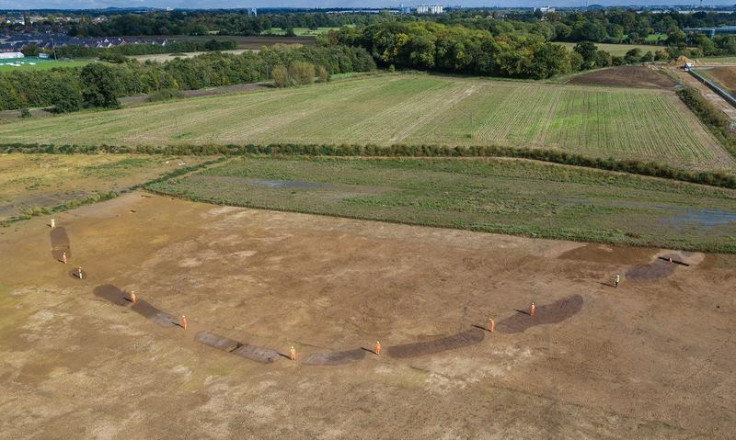5,500-year-old monument and tools unearthed near Windsor Castle
Discovery sheds more light on how our ancestors settled in Windsor 5,500 years ago.

Archaeologists have uncovered a monument that dates back to the Neolithic period near Windsor Castle, Wessex Archaeology announced on Thursday (8 February).
At 5,500 years old, the structure is the earliest example of neolithic construction ever found in Britain, according to Wessex Archaeology.
Described as a causewayed enclosure (ceremonial ground) and consisting of circling ditches and artificial barriers with gap entrances, it was uncovered within miles of Windsor Castle in Berkshire. The site was identified within a sand and gravel quarry near Datchet, 2.3 miles away from Windsor.
Within the structure, the archaeologists found several objects such as animal bones and pottery sherds. The team believe the pots had been smashed deliberately, potentially during some particularly festive occasion. They also discovered human remains (part of a skull and femur) in one of the ditches.
They found stone weapons including leaf-shaped flint arrowheads, serrated blades, stone axes and grinding stones.
"This is an exciting find. We're talking about 5,500 years ago," fieldwork director for Wessex Archaeology John Powell told the Guardian. "These are earliest peoples, who are actually settling down in the landscape and leaving their mark on it. So it's quite an impressive thing to be able to excavate."
About 80 monuments dating back to the Neolithic period have been found in Britain so far, but the Berkshire discovery is exciting for one particular reason: Other sites could only be studied partially, leaving some questions unanswered, but this recent find could be uncovered in its entirety.
"Its position within the quarry means that we'll be able to investigate pretty much all of the enclosure," Powell explains, "So that will mean we've got a much better picture and an understanding of the site as a whole."
The area is located in a slope in what could have been a Thames floodplain. The team had set out to look for prehistoric remains. "We didn't expect to find such a large monument on the site. We've worked on a few other quarries in the area and found small settlements, evidence of field ditches and small houses, but not these larger communal monuments," said Powell.
Get out of your sherd
The pot sherds found at the site were decorated using bird bones or twisted cords.
The team is planning to analyse the pot sherds in order to see what food or drinks they contained.
The archaeologists suspect the causeway was used seasonally for special ceremonies, trading goods or socialising. Powell said these findings suggest that 5,500 years ago, humans were starting to settle down, domesticate animals and acquire cattle as well as working flint.
"This is such an exciting and important discovery in the royal borough. The excavation of this monument will add so much to our shared human story," said Roland Smith of Berkshire Archaeology.
While the team has only been able to map out 265 metres of the site so far, they project that its totality will reach a perimeter of about 500 metres and hope to uncover it all later in 2018.






















